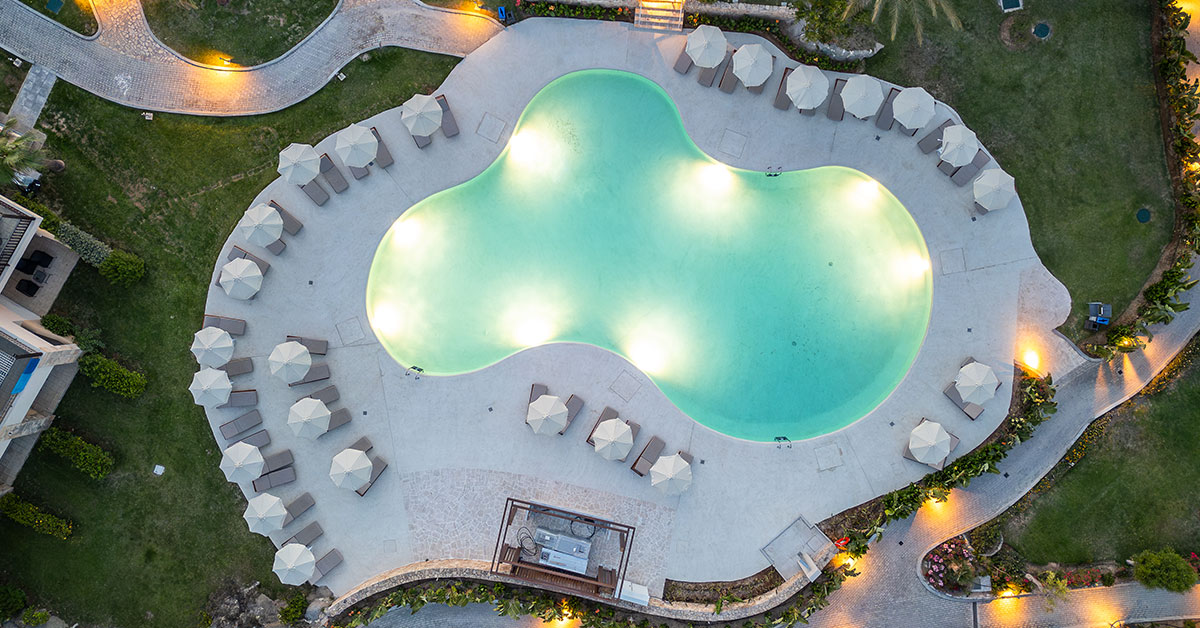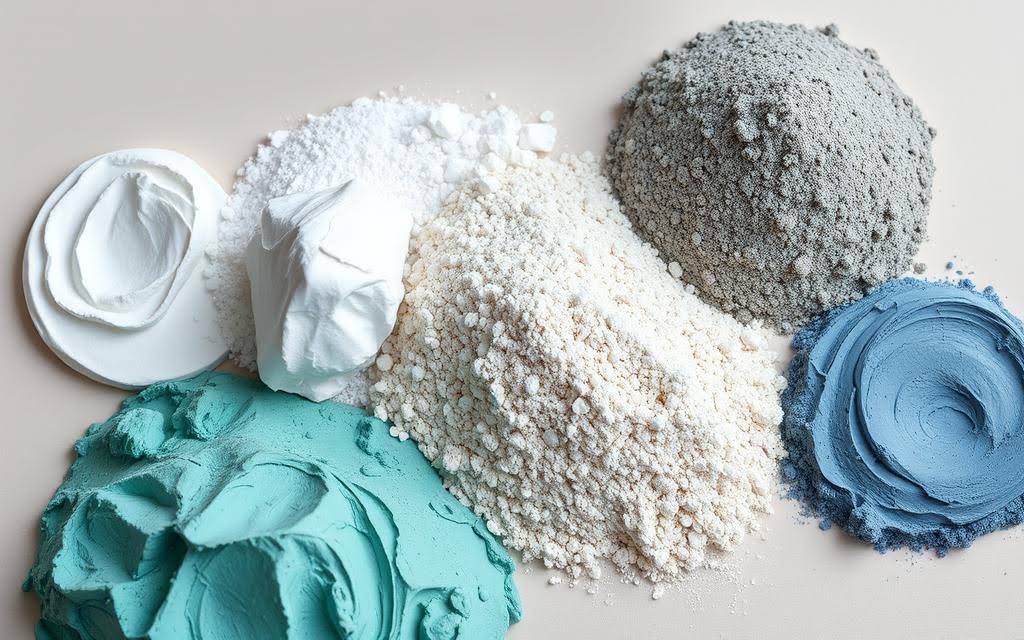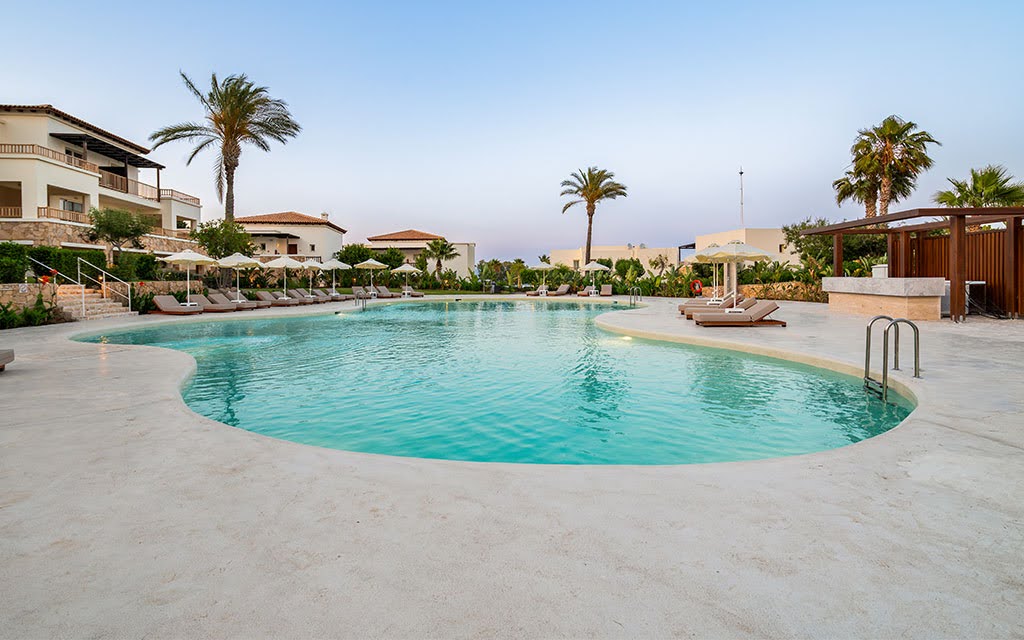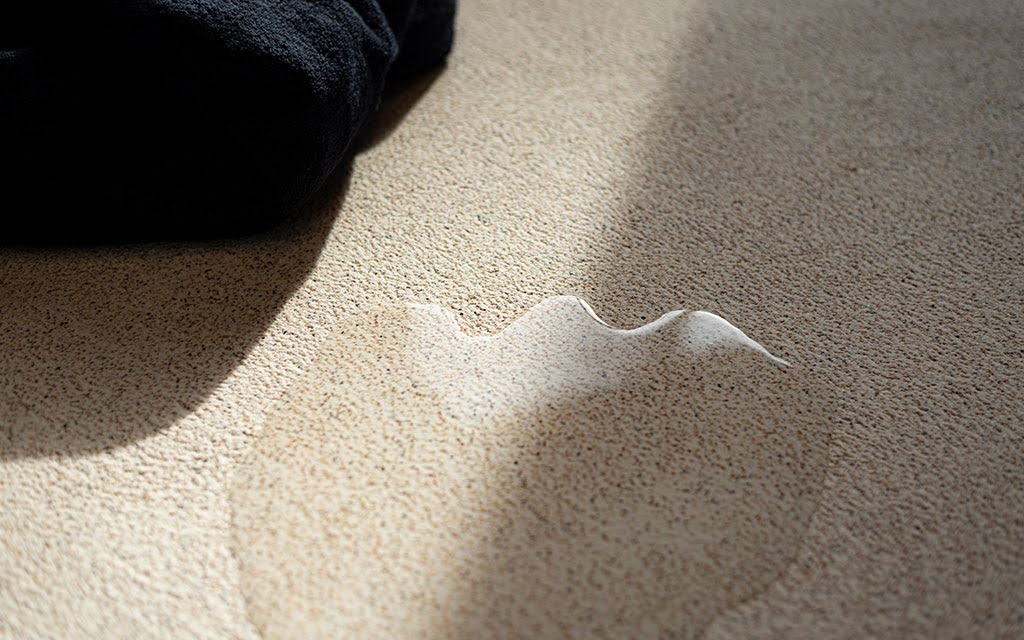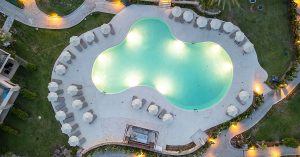Have you ever gazed at your pool’s surface and wondered what stories lie beneath the water? While many homeowners overlook the importance of regular pool renovation, the truth is that a well-timed transformation can dramatically enhance both the visual appeal and functional performance of your concrete pool. Understanding when and how to renovate your pool isn’t just about aesthetics—it’s a strategic investment that can significantly boost your property value while creating a safer, more enjoyable swimming environment for years to come.
This comprehensive guide to pool remodeling will navigate you through the intricate world of pool renovation and replastering, providing you with the essential knowledge needed to make informed decisions and collaborate effectively with a professional pool contractor. Whether you’re dealing with an aging concrete pool that’s showing signs of wear or simply dreaming of upgrading your backyard oasis, you’ll discover the insights necessary to transform your vision into reality and create your dream pool.
Key Takeaways
- Regular pool renovation enhances both your swimming experience and overall property value significantly
- Recognizing early warning signs that your existing pool needs attention can prevent costly repairs and save substantial money over time
- Different materials for pool plastering offer unique advantages and aesthetic benefits tailored to specific homeowner needs and preferences
- Understanding the various renovation costs associated with a pool remodel helps ensure thorough planning and realistic budget expectations
- The comprehensive process of pool restoration includes several essential steps designed to guarantee long-lasting, professional results
Proper pool maintenance following renovation is absolutely crucial for protecting your investment and maximizing its lifespan
Table of Contents
Understanding the Basics of Pool Renovation
Pool renovation represents far more than a simple cosmetic upgrade—it’s a comprehensive approach to maintaining your swimming area’s safety, functionality, and visual appeal while addressing underlying issues before they escalate into major problems. When homeowners invest in thoughtful pool restoration, they’re not only enhancing their backyard’s aesthetic value but also ensuring their pool remains a safe and inviting space for family gatherings, entertaining guests, and daily relaxation.
Importance of Pool Renovation
The benefits of renovating your pool extend well beyond surface-level improvements, creating a ripple effect that positively impacts multiple aspects of your property and lifestyle. A professionally executed renovation dramatically enhances your backyard’s overall appearance while encouraging increased use of your outdoor space throughout the swimming season. More importantly, pool updates address critical safety concerns by eliminating potential hazards such as rough surfaces, structural weaknesses, and chemical imbalances that could compromise swimmer safety.
Regular maintenance and timely renovations serve as preventive measures that stop minor issues from developing into major structural problems, ultimately protecting your investment while ensuring optimal water quality and circulation. By addressing your pool’s needs proactively through modernizing your pool systems and surfaces, you’re maintaining its operational efficiency and extending its functional lifespan, which translates to better performance and fewer emergency repairs down the road.
Key Signs Your Pool Needs Renovation
Recognizing the warning signs that indicate your pool requires professional attention is crucial for maintaining both safety and aesthetics while avoiding more extensive and expensive repairs later. Pool owners should remain vigilant for these critical indicators that suggest it’s time to consider renovation, especially in older concrete pools or when planning a pool renovation project:
Signs | Description | Potential Consequences |
Rough Surfaces | Abrasive or chipped surfaces around the pool area | Can cause painful scrapes and injuries, significantly compromising swimmer safety and comfort |
Persistent Leaks | Continuous water loss despite normal evaporation | May indicate serious structural damage that can worsen over time and affect the surface of your pool |
Visible Cracks | Structural cracks in walls, floors, or coping | Can expand and compromise the entire pool structure, leading to major structural failures |
Surface Discoloration | Faded, stained, or discolored plaster surfaces | Suggests deteriorating materials that affect both the functionality of your pool and structural integrity |
Addressing these renovation needs promptly not only improves your pool’s appearance and safety but also helps preserve its structural integrity and extends its operational lifespan. Pool owners who prioritize regular maintenance and timely renovations create a safer, more attractive swimming environment that continues to provide enjoyment and value for decades, whether your pool is a fiberglass pool, gunite pools, or traditional concrete construction.
Types of Pool Plastering: What You Should Know
Understanding the diverse range of materials available for pool plastering is absolutely essential for making informed decisions that will affect both the appearance and long-term performance of your swimming pool. Each plastering option offers distinct characteristics, benefits, and aesthetic qualities that cater to different homeowner preferences, budget considerations, and functional requirements. Selecting the right plastering material can dramatically enhance your pool ownership experience while ensuring optimal durability and visual appeal, regardless of whether you’re working with an existing pool or planning new pool design elements.
Common Pool Plaster Materials
Pool owners today have access to an impressive variety of plastering materials, each offering unique advantages and aesthetic possibilities. Classic white plaster remains a timeless choice that provides a clean, traditional appearance while offering excellent value and proven performance over many years of use. Experienced pool contractors often recommend this option for homeowners seeking a reliable, cost-effective solution that complements virtually any landscape design around your pool.
Exposed aggregate plaster introduces texture and natural color variations that create visual interest while providing enhanced slip resistance—a crucial safety feature for families with children and elderly swimmers. This material combines decorative appeal with practical functionality, making it an excellent choice for homeowners who prioritize both aesthetics and safety around the pool area.
Micro-pebble plaster incorporates thousands of tiny stones to create an incredibly smooth, comfortable surface that feels luxurious underfoot while providing exceptional durability against daily wear and chemical exposure. Meanwhile, polished plaster delivers a sophisticated, mirror-like finish that reflects light beautifully and creates a stunning visual effect that can transform any backyard into a resort-like retreat, perfect for creating the pool of your dreams.
Benefits of Each Plaster Type
Understanding the specific advantages of each plastering material helps homeowners make informed decisions that align with their priorities, budget constraints, and long-term goals when remodeling a pool. Classic white plaster offers unmatched affordability and simplicity while providing reliable performance that has satisfied pool owners for generations. Its neutral appearance complements any design aesthetic and creates a timeless look that never goes out of style, making it ideal for custom pool designs.
Exposed aggregate plaster provides exceptional visual appeal through its natural texture and color variations while offering superior slip resistance that enhances the safety of your pool for swimmers of all ages. This material’s durability makes it an excellent long-term investment that maintains its appearance even under heavy use and exposure to pool chemicals.
Plaster Type | Key Benefits | Ideal For | Lifespan |
Classic White Plaster | Affordable, timeless, easy maintenance | Budget-conscious homeowners seeking reliable performance | 7-10 years |
Exposed Aggregate | Natural texture, slip-resistant, visually appealing | Families prioritizing safety and aesthetic appeal | 10-15 years |
Micro-pebble Plaster | Smooth comfort, exceptional durability, luxurious feel | Homeowners wanting premium comfort and longevity | 15-20 years |
Polished Plaster | Mirror-like finish, light reflection, sophisticated appearance | Those seeking resort-like aesthetics and elegance | 12-18 years |
Micro-pebble plaster stands out for its incredibly smooth texture and outstanding durability, providing a comfortable surface that resists staining and chemical damage while requiring minimal maintenance. Polished plaster creates a spectacular visual effect that transforms ordinary pools into stunning water features, with its reflective properties enhancing the overall ambiance of your outdoor space and helping revitalize your pool into a true backyard centerpiece.
Cost of Pool Renovation: Factors to Consider
Understanding the financial aspects of pool renovation is crucial for successful project planning and ensuring that your transformation stays within budget while delivering the results you envision. The cost of renovating a pool typically ranges from $3,000 to $10,000 for basic replastering, though this figure can vary significantly based on numerous factors including the size of your pool, material selection, geographic location, and the extent of additional repairs required. Smart homeowners approach renovation costs with a comprehensive understanding of all variables that influence the overall cost of their project.
Average Costs of Replastering a Pool
The pool renovation cost varies considerably depending on the size of your pool, the type of plaster material selected, and any additional repairs or upgrades incorporated into the project. For instance, premium finishes such as quartz and pebble surfaces command higher prices compared to traditional white plaster, but they also offer enhanced durability and aesthetic appeal that can justify the additional investment over time. Much does it cost to renovate depends largely on whether your pool requires extensive preparation work or can be updated with minimal surface preparation.
When considering the cost to renovate your swimming pool, it’s important to factor in not just the materials but also the complexity of the work required. Larger pools naturally require more materials and labor, while pools with intricate shapes or custom features may increase labor costs significantly. The condition of your existing inground pool and any necessary pool equipment upgrades should also be considered when budgeting for your renovation project.
Factors Influencing Pool Renovation Costs
Multiple variables significantly impact the cost of a pool remodel, making it essential to consider each factor carefully during the planning phase. Geographic location plays a substantial role in determining costs, as areas with higher demand for pool services and elevated living costs typically command premium pricing for renovation work. Labor rates vary dramatically across different regions, with urban areas and markets with limited qualified contractors often charging more for professional services.
The condition of your existing pool significantly influences renovation costs, as pools requiring extensive structural repairs, surface preparation, or upgrades to meet current safety codes will require additional materials and labor. Pool damage from years of use, weather exposure, or chemical imbalances can affect the cost substantially, particularly if structural issues need to be addressed before replastering can begin.
Cost Factor | Impact Level | Typical Cost Addition |
Pool Size | High | 20-40% increase per 500 sq ft |
Material Selection | High | 50-200% premium for luxury finishes |
Structural Repairs | Very High | $2,000-$8,000+ additional |
Geographic Location | Moderate | 15-30% regional variation |
Equipment Updates | Moderate | $1,000-$5,000 additional |
To develop an accurate budget for your pool renovation project, it’s essential to research local market rates thoroughly and obtain detailed quotes from multiple qualified contractors. This approach helps ensure you receive competitive pricing while identifying the best value proposition for your specific needs, whether you’re working with concrete or gunite pools, or planning to add features like bubblers and pool lighting to enhance your swimming experience.
The Pool Renovation Process: Step-by-Step Breakdown
The pool renovation process involves a carefully orchestrated sequence of steps designed to ensure optimal results and long-lasting performance for your newly transformed swimming pool. Proper planning and meticulous execution are absolutely vital for achieving the best possible outcomes, which is why working with an experienced professional pool contractor dramatically increases your chances of success while minimizing potential complications and delays throughout your remodeling your swimming pool project.
Preparation for Renovation
The renovation journey begins with a comprehensive inspection of your entire pool area, during which qualified professionals assess groundwater levels, structural integrity, and overall condition to identify any underlying issues that could impact the renovation process. This thorough evaluation helps determine the scope of work required and ensures that all necessary preparations are completed before the actual renovation begins, particularly important when working with older concrete pools that may have hidden structural concerns.
The first critical step involves the need to drain the pool safely and efficiently, which requires careful attention to environmental regulations and proper disposal procedures. Professional contractors understand the importance of this process and have the equipment and expertise necessary to handle drainage efficiently while protecting your surrounding landscape and complying with local water discharge requirements. This step is essential whether your pool is an in-ground pool or requires special considerations for your specific pool type.
During the preparation phase, contractors conduct detailed inspections to identify any structural problems, equipment malfunctions, or safety concerns that need to be addressed before applying new materials. Taking care of these issues early in the process helps prevent future complications and ensures a solid foundation for your pool restoration project, giving your pool the attention it deserves for long-term success.
Executing the Plastering Process
Once preparation is complete, the actual renovation work can commence with the careful removal of old, deteriorated plaster materials to create a clean, properly prepared surface for new materials. This process requires specialized equipment and expertise to ensure complete removal without damaging the underlying structure or compromising the integrity of your pool shell, a crucial step that will make your pool ready for its transformation.
The application of a high-quality bond coat represents a crucial step in the plastering process, as this material significantly improves the adhesion between the pool surface and new plaster materials. This step is absolutely essential for ensuring long-term durability and preventing problems such as plaster delamination or premature failure that could require costly repairs, helping to keep your pool in optimal condition for years to come.
Finally, the new plaster is expertly applied using professional techniques and equipment to create a smooth, uniform finish that enhances both the appearance and functionality of your pool. This careful application process ensures optimal results and maximizes the lifespan of your renovation investment, whether your pool may be a standard rectangular design or features custom pool elements that require specialized attention.
Maintaining Your Newly Renovated Pool
After completing your pool renovation and replastering project, implementing a comprehensive maintenance routine becomes absolutely crucial for preserving the beauty and functionality of your investment while ensuring it continues to provide years of enjoyment. Proper maintenance practices not only protect your newly renovated surfaces but also help maintain optimal pool water quality and extend the lifespan of your pool equipment and systems, ensuring your pool remains the centerpiece of your backyard entertainment area.
Essential Post-Renovation Care
Water chemistry balance represents one of the most critical aspects of maintaining your pool following renovation, as properly balanced water prevents scaling, staining, and premature deterioration of your new plaster surfaces. Regular testing and adjustment of pH levels, alkalinity, and sanitizer concentrations help maintain water quality while protecting your investment from chemical damage, ensuring your pool stays pool clean and inviting for swimmers.
Daily brushing of your pool’s surface for the first month after replastering is absolutely essential for removing plaster dust and allowing the new surface to cure properly. This seemingly simple task prevents buildup of residue that could affect water clarity and helps ensure optimal adhesion and longevity of your new plaster finish, making the pool more comfortable and safe for family use.
Consistent filter cleaning and debris removal maintain crystal-clear water while reducing strain on your pool’s circulation system and pool pump. These routine maintenance tasks help preserve the pristine appearance of your renovated pool while ensuring optimal water circulation and filtration performance, contributing to the overall health and longevity of your pool system.
Additional considerations for maintaining your pool include regular inspection of pool steps, proper operation of your pool heater during cooler months, and ensuring your pool cover is properly maintained to protect the surface when the pool is not in use. These practices, combined with attention to pool lighting and other pool equipment, help ensure your investment continues to provide value and enjoyment.
By following these essential maintenance practices, you’ll protect your pool renovation investment while creating a beautiful, safe, and enjoyable swimming environment that continues to provide value and pleasure for many years to come, making your backyard the perfect setting for relaxation and entertainment around your pool.
Terrazzo GraniTech: The Game-Changer for Pool Renovation
While traditional pool renovation methods have served homeowners for decades, innovative materials and techniques are revolutionizing how we approach pool restoration and replastering projects. Terrazzo GraniTech represents a groundbreaking advancement in pool renovation technology, offering a superior alternative to conventional plastering methods that addresses many of the limitations and challenges associated with traditional approaches, particularly when working with common pool surfaces that have deteriorated over time.
Revolutionary No-Demolition Approach
Terrazzo GraniTech’s patented acrylic resin-based plaster system eliminates the need for demolition and extensive surface preparation, making it an ideal solution for pool renovation projects where time, cost, and disruption are major concerns. This innovative material can be applied directly over existing surfaces, including old plaster, tile, and even concrete, dramatically reducing renovation time while eliminating the mess and expense associated with traditional removal methods that typically plague remodeling projects.
The no-demolition approach provided by Terrazzo GraniTech offers significant advantages over conventional renovation methods, including substantial cost savings, reduced project timelines, and minimal disruption to your property and daily routine. This revolutionary system eliminates permit requirements in many jurisdictions while avoiding the risks and complications that often accompany demolition work, making it particularly valuable for homeowners who want to give your pool a complete makeover without the traditional hassles.
Superior Durability and Performance
Unlike traditional cement-based plasters that are prone to cracking, scaling, and deterioration over time, Terrazzo GraniTech features advanced anti-crack memory resin technology that provides exceptional durability and long-term performance. This innovative material is specifically engineered to withstand the harsh conditions found in pool environments, including exposure to chemicals, UV radiation, and constant moisture without compromising its structural integrity or aesthetic appeal, ensuring the safety of your pool for decades.
The waterproof and crack-resistant properties of Terrazzo GraniTech make it particularly well-suited for pool renovation applications where traditional materials have historically failed. Professional contractors report significantly fewer callbacks and warranty issues when using this advanced material, demonstrating its superior reliability and performance characteristics that help pool owners avoid the frustration of repeated repairs and maintenance issues.
Aesthetic Versatility and Customization
Terrazzo GraniTech offers unlimited design possibilities through its extensive range of colors, textures, and finishes like medium, fine and microterrazzo 600Q, allowing homeowners to create truly unique and personalized pool environments that reflect their vision for the perfect backyard retreat. The material’s versatility enables the creation of seamless, jointless surfaces that provide a modern, sophisticated appearance while maintaining the natural beauty and texture that homeowners desire, helping to add to your pool’s overall appeal and value.
Whether you prefer subtle, natural tones that complement your landscape or bold, contemporary colors that make a dramatic statement, Terrazzo GraniTech can be customized to match your vision and aesthetic preferences. This level of customization is particularly valuable for pool renovation projects where creating a cohesive design that complements existing architectural elements is essential, ensuring your renovated pool becomes the stunning centerpiece of your outdoor living space.
Comparison: Traditional vs. Terrazzo GraniTech Renovation
Aspect | Traditional Renovation | Terrazzo GraniTech |
Demolition Required | Yes, extensive removal needed | No, applies over existing surfaces |
Project Duration | 2-4 weeks | 3-5 days |
Permit Requirements | Often required | Usually none needed |
Cost | $10,000-$25,000+ | 40-60% less expensive |
Durability | 7-15 years | 20+ years |
Crack Resistance | Prone to cracking | Anti-crack memory resin |
Maintenance | Regular resurfacing needed | Minimal maintenance required |
Waterproofing | Requires separate waterproofing | Inherently waterproof |
Aesthetic Options | Limited to standard finishes | Unlimited customization |
Surface Texture | Standard pool finishes | Customizable texture options |
Professional Installation and Long-Term Value
Terrazzo GraniTech’s installation process requires specialized training and expertise, which is why working with certified professionals ensures optimal results and maximum performance from your pool renovation investment. The material’s unique properties and application techniques require specific knowledge and experience that only qualified installers possess, ensuring your pool receives the professional attention it deserves for lasting results.
The long-term value proposition of Terrazzo GraniTech extends far beyond its initial cost savings, offering homeowners decades of reliable performance with minimal maintenance requirements. Professional contractors consistently report higher customer satisfaction rates and fewer warranty claims when using this advanced material, making it an excellent choice for homeowners seeking a premium pool renovation solution that delivers lasting results while helping them achieve their vision of the perfect backyard oasis.
With its combination of innovative technology, superior performance, and aesthetic versatility, Terrazzo GraniTech represents the future of pool renovation, offering homeowners a smarter, more efficient alternative to traditional methods while delivering exceptional results that enhance both property value and swimming enjoyment for years to come.

